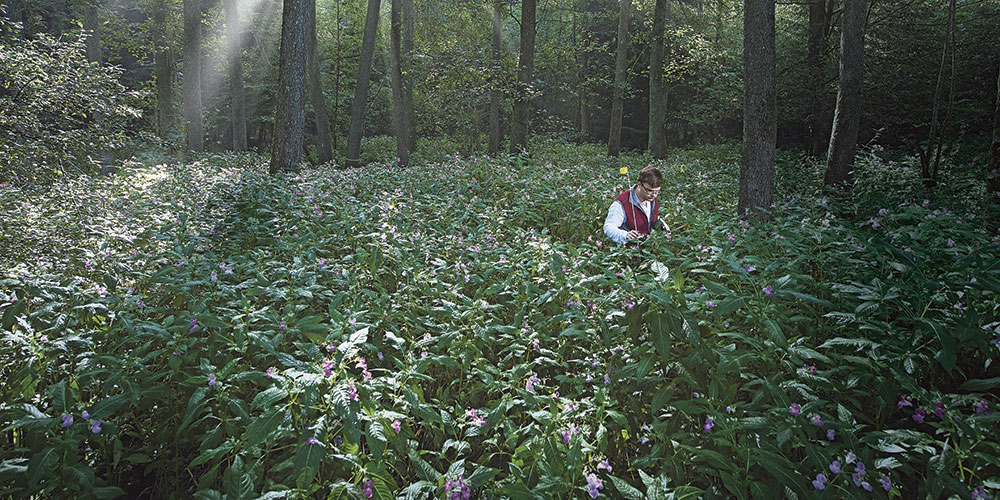The weed from the east.
Text: Christoph Dieffenbacher
Genetische Analysen helfen, die Ausbreitung von Neophyten zu verstehen.
Like other invasive neophytes, Himalayan Balsam (Impatiens glandulifera) drives out native species, changes the surrounding flora and retards the growth of nearby saplings. Originally from the western Himalayas, the plant reached England as early as 1839. From there, it made its way into many European gardens, where it became a popular ornamental plant.
For several decades, the species has been spreading explosively along the banks of our streams and rivers and in forests, and impacting on existing fl oral diversity. The newcomer appears to act via the underground connections between trees and mycorrhizal fungi: its leaves and roots contain a substance that retards the growth of mycorrhizal fungi. In young beech trees that are surrounded by the imported plant, the number of root fungi is 60% lower than in trees with no neophytes nearby.
The Laufen valley in the Canton of Basel land, for example, now has extensive, dense patches of this fast-growing plant. The doctoral student Luca Gaggini (pictured), supported by Dr. Hans-Peter Rusterholz and Professor Bruno Baur of the University of Basel’s conservation biology research group, is studying the impact the new arrival is having on the subterranean diversity of fungi and plants in the area.
One suggestion is that the increased prevalence of this invasive neophyte in our forests is the result of forest management practices, which encourage the spread of Himalayan Balsam. Students are kept up to date with current research findings whenever they undertake field trips.
Luca Gaggini is a doctoral researcher in the nature conservation biology research group. He is studying the impact of invasive plant species on native forests, both in Ticino and in the Basel region.
More articles in the current issue of UNI NOVA.







